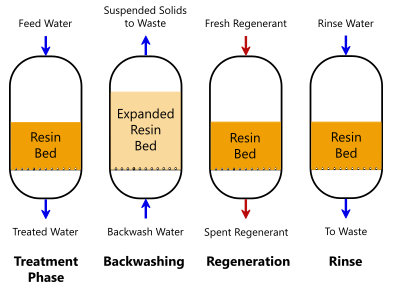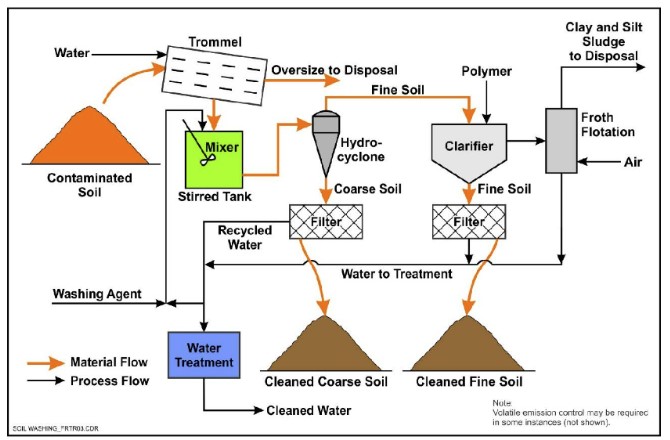The Complete Guide to Effective PFAS Treatment for Water Contamination
The Complete Guide to Effective PFAS Treatment for Water Contamination
Blog Article
Advanced Techniques for Reliable PFAS Contamination Removal
The persistent challenge of PFAS contamination demands the exploration of advanced removal methods that can properly resolve these unsafe substances. Cutting-edge innovations, such as innovative oxidation procedures and various adsorption techniques, have actually emerged as encouraging services in mitigating PFAS from affected atmospheres.
Understanding PFAS Features
Although per- and polyfluoroalkyl substances (PFAS) have actually been widely used in different commercial and consumer items due to their special buildings, their perseverance in the setting positions substantial obstacles to public health and security. PFAS are a team of artificial chemicals defined by a carbon-fluorine bond, one of the toughest chemical bonds known, which adds to their phenomenal stability and resistance to destruction. This stability permits PFAS to build up in the environment and living microorganisms, resulting in possible adverse health and wellness results.
These very same residential or commercial properties add to their environmental persistence, as PFAS do not easily break down through natural procedures. Comprehending the chemical properties of PFAS is vital for developing reliable approaches to take care of and minimize their ecological influence.
Cutting-edge Removal Technologies
The determination of PFAS in the setting has actually spurred the growth of cutting-edge remediation technologies focused on successfully getting rid of these contaminants from influenced communities. Among the most encouraging methods are advanced oxidation procedures (AOPs), which utilize powerful oxidants to damage down PFAS substances right into much less harmful substances. AOPs can be customized to target certain PFAS structures, boosting their efficacy.
An additional emerging innovation is making use of adsorption media, such as triggered carbon and ion exchange resins, which can selectively record PFAS from infected water. These products have actually revealed substantial elimination performances, although regular replacement and regeneration are required to maintain performance.
Membrane layer purification techniques, consisting of reverse osmosis and nanofiltration, are additionally gaining grip in PFAS removal. These methods can successfully separate PFAS from water, providing a practical remedy for treating infected resources. Additionally, thermal treatment methods, such as incineration, can break down PFAS into safe byproducts, though they call for mindful administration to manage emissions.
Collectively, these innovative removal innovations represent substantial improvements in the ongoing battle against PFAS contamination, using different approaches to restore affected atmospheres and safeguard public wellness.

Bioremediation Strategies
Bioremediation strategies use a promising strategy to addressing PFAS contamination by harnessing the natural abilities of bacteria to break down these persistent substances (m270 waste management). This method includes the usage of microorganisms, fungis, and various other microorganisms that can metabolize or transform PFAS compounds into much less damaging results
Recent innovations in molecular biology and environmental microbiology have actually boosted our understanding of microbial areas and their potential roles in PFAS degradation. Scientists are proactively exploring particular pressures of bacteria, such as Pseudomonas and Bacillus, which have shown the ability to damage down specific PFAS compounds.
Sitting bioremediation strategies, where microbes are boosted straight in infected atmospheres, can be especially reliable. This technique usually entails the application of nutrients or electron contributors to promote microbial development and task. Furthermore, ex lover situ approaches, such find out this here as bioreactors, enable controlled problems that can optimize destruction prices.
Regardless of the promise of bioremediation, obstacles remain, including the intricate nature of PFAS compounds and the demand for comprehensive area screening - m270 waste management. Proceeded r & d will certainly be important to fine-tune these methods and examine their efficiency in diverse ecological contexts
Adsorption and Filtration Techniques
Dealing with PFAS contamination often involves utilizing adsorption and filtration approaches, which are made to eliminate these consistent chemicals from water and dirt. Among the numerous techniques, turned on linked here carbon adsorption is commonly used as a result of its high area and porosity, enabling effective capturing of PFAS particles. Granular turned on carbon (GAC) systems are especially preferred for treating large volumes of contaminated water, while powdered activated carbon (PAC) can be used for smaller-scale applications.
Ion exchange resins additionally reveal assurance in PFAS removal, operating by trading PFAS ions with less hazardous ions in the water. This method has shown effectiveness in concentrating PFAS compounds, promoting their subsequent removal. Additionally, membrane layer filtration strategies, such as reverse osmosis and nanofiltration, operate by using semi-permeable membranes to different PFAS from water, efficiently reducing their concentrations.
While these techniques are efficient, they need to be thoroughly selected based upon the particular PFAS compounds existing and the environmental context. Continual improvements in products scientific research and engineering are causing the advancement of unique adsorbents and filtering systems that improve elimination efficiencies and reduce functional expenses, thereby boosting total remediation initiatives.
Regulatory and Policy Considerations
Just how can effective governing structures boost the monitoring of PFAS contamination? Detailed plans are necessary to ensure a collaborated and durable response to the difficulties positioned by per- and polyfluoroalkyl materials (PFAS) Laws can develop clear guidelines for surveillance, reporting, look at this now and remediating PFAS-contaminated sites, cultivating accountability amongst industries and public entities. (m270 waste management)

In addition, financial motivations and grants can be integrated into policies to encourage the adoption of sophisticated remediation innovations. Policymakers must likewise focus on study and growth, ensuring that emerging techniques for PFAS elimination are confirmed and applied efficiently.
Moreover, public understanding and interaction are essential components of any type of governing approach, equipping communities to advocate for their wellness and safety. Ultimately, a well-structured regulative environment will certainly not just improve the management of PFAS contamination yet likewise advertise lasting techniques that shield future generations.
Final Thought
In recap, the intricacy of PFAS contamination necessitates the adoption of advanced removal approaches. Proceeded research and development in this field continue to be vital to addressing the obstacles positioned by PFAS contamination.
Report this page